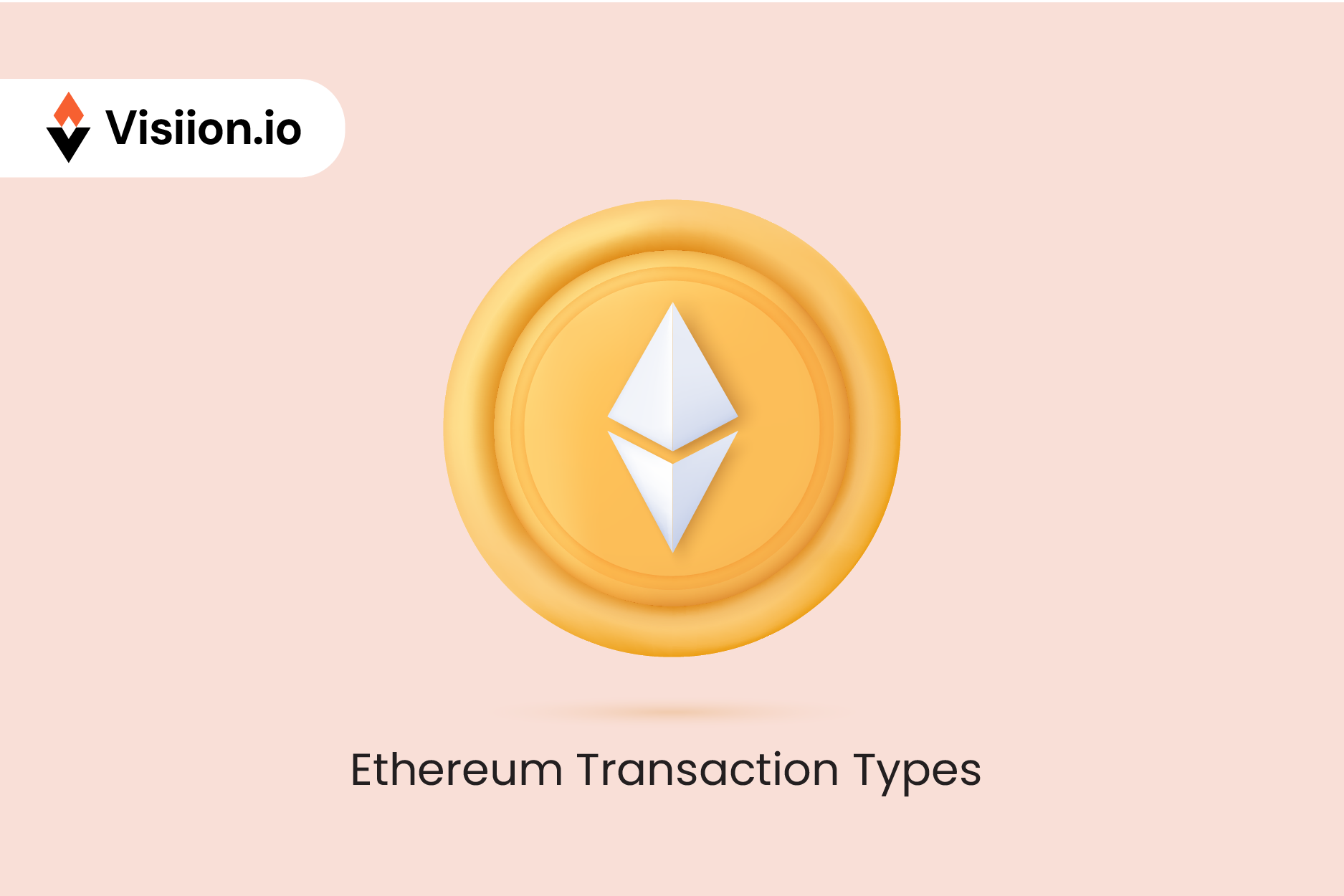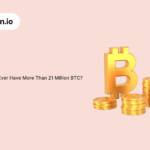Ethereum Transaction Types
Ethereum is one of the most popular cryptocurrencies in the world. In fact, it’s second only to Bitcoin. Such popularity makes it an eye candy for a lot of investors and traders. But a lot of traders and investors do not understand every aspect of Ethereum fully.
One of these aspects is the Ethereum transaction types. While you might think Ethereum transactions are all about sending or receiving ETH, they are not! There is a lot more to it. There are multiple Ethereum transaction types. These transactions are critical for smart contracts, DApps and a lot of other things. In this blog, we will shed some light on different Ethereum transaction types.
So, without much delay, let’s begin.
What Is an Ethereum Transaction?
Let’s get a bit technical here. Ethereum transactions are simple instructions. Any user or even a smart contract can give this instruction to the network. Now, these instructions vary a lot. They could be as simple as sending Ether (ETH) from one wallet to another. Or they could be complex, like interaction with a smart contract itself. And evert time such a transaction takes place, it get recorded on the blockchain. Such a measure helps maintain the security and transparency of the entire network.
Now, let’s take a look at different types of Ethereum Transactions.
Types of Ethereum Transactions
- Basic Ether Transfer:- This is the simplest and most common one from multiple Ethereum transaction types. Here, one Ethereum user sends their Ether (ETH) to another user. As there are only two parties involved, the logic is simple. It’s just like you are sending money from your bank account to your friend’s bank account. No complex logic, no smart contracts and nothing else. These Ethereum transaction types are widely used to make payments or fund transfers between different wallets.
- Contract Deployment:- This is a big one and a bit complex, too, When you execute a Contract deployment transaction, the network creates a new smart contract. These smart contracts bear similarities to our traditional contracts or agreements. But they are in digital form. The most amazing thing about them is they are executed the moment certain conditions are met. This process is automatic, so it happens without human interference. Have you ever used a vending machine? This one’s just like that. Developers deploy smart contracts and are able to run decentralized applications or DApps. Just like your vending machines, once you pay and pick the product, the machine delivers it automatically.
- Function Call (Smart Contract Interaction):- You have surely heard about staking tokens or transferring tokens from one wallet to another, right? These are prime examples of a Function Call or Smart Contract Interaction. A function call transaction allows users to interact with an already existing smart contract. So whenever you are interacting with DApps like DeFi protocols or playing blockchain-based games, you’re actually calling functions in a contract. These transactions trigger a specific action. These actions are coded into the smart contract itself.
- Token Transfer:- Ethereum supports numerous tokens like ERC-20 tokens or ERC-721 NFTs. People share these tokens all the time. However, to transfer these tokens, blockchains execute a certain transaction called a token transfer transaction. These are a tad different from your standard ETH transfer. Reason? Well, these transactions involve small contracts. These smart contracts manage token balances. It’s more like sending a voucher or coupons instead of money! We all know ETH is a currency, but these tokens are not. They are different assets that are managed within the Ethereum ecosystem.
- Meta-Transactions:- Meta-transactions are a bit unique. These transactions allow users to allot the task of gas fee payment to a third party. But why do something like that? Well, it’s pretty simple. Gas fees (cost of running transactions) vary greatly. It depends on the load on the network. Sometimes, these gas fees are exorbitant. This can nullify the profit a trader is making. Here’s where Meta-transactions come in. When you perform a meta-transaction, a third party (a service provider) covers your gas fees. This is a very unique and one-of-a-kind Ethereum transaction type.
- Atomic Swaps:- This is not something that traders or investors do regularly. But still, this Ethereum transaction type happens a lot. Atomic swap is a peer-to-peer transaction between traders but outside the blockchain! This happens without depending on any third-party entities, such as crypto exchanges. So, these are not the traditional swaps that you will see on Boutique Crypto Exchanges like Visiion.io. These are entirely different. Let’s say you want to swap your ETH with your friends’ BTC, but you want to do it outside the purview of a crypto exchange. That’s an Atomic Swap. It’s a decentralized way to trade assets securely across different blockchains.
- Transactions:- Have you ever been on a fast-track lane at a toll booth? You get through it faster. They are designed to reduce the traffic load on the main toll gates. Similarly, the Ethereum blockchain too was dealing with an extremely high number of transactions. Result? The gas fees went extremely high, and the waiting period increased significantly. So, the developers introduced Layer 2 Transactions. Layer 2 solutions like Rollups and state channels can handle a high number of transactions outside the channel. This reduces the traffic on the main channel and gas prices, too. Once the transactions are processed, they are settled on the main Ethereum blockchain. Layer 2 transactions have revolutionized the Ethereum transactions. More number of people today are able to make transactions at lower costs.
What is Gas Fees?
To execute any transaction on Ethereum, users pay gas fees. Gas is the fuel that powers the network. Every action, whether it’s transferring ETH or interacting with a smart contract, consumes a certain amount of computational effort. And gas fees compensate the validators who perform this work. Gas fees are calculated based on two factors: the gas price (how much you’re willing to pay for each unit of gas) and the gas limit (how much gas you think the transaction will consume).
Factors That Influence Gas Fees
Network Congestion
When a lot of people are using Ethereum, gas fees rise. This is similar to surge pricing in ride-share apps during busy times.
Transaction Complexity
More complex transactions, like interacting with a smart contract, consume more gas. Simple ETH transfers require less gas.
Gas Price Volatility
Gas prices can fluctuate based on demand and network usage.
EIP-1559 and Its Impact
Ethereum’s gas fee structure was improved in 2021 with the introduction of EIP-1559. Instead of a simple auction system where users bid for gas, EIP-1559 introduced a base fee that fluctuates based on network demand and a priority fee (or tip) that incentivizes miners to process transactions quickly. The base fee is burned, reducing ETH supply over time, making the network deflationary during high demand periods.
Ethereum Internal Transactions
Ethereum Internal transactions, also known as “message calls,” happen within the Ethereum network but are not directly initiated by users. Instead, they are triggered by smart contracts interacting with each other. For instance, if one smart contract sends ETH to another contract as part of its logic, that’s an internal transaction. Although they don’t appear in transaction history like user-initiated transactions, you can still find them on tools like Etherscan.
Future Developments and Trends
The Ethereum is developing continuously. More institutions, investors and traders are participating in ETH transactions than ever. So the future developments will play a critical role. For example, Sharding and Layer 2 Networks are the two big factors that will impact the Ethereum’s Future. Both these developments are reducing the gas fees and are increasing transaction throughput. Result? Ethereum is becoming more and more accessible to the everyday users.
- Sharding: This process breaks the Ethereum network into smaller pieces (shards) that can process transactions in parallel. Result? The load on the blockchain reduces and efficiency improves multi-fold.
- Rollups: Rollups bundle many transactions together off-chain and submit them as one to the Ethereum mainnet. This process brings down the gas costs for individual transactions.
Wrapping Up
There are a wide range of Ethereum transactions. Each one has different application. These applications could be a simple ETH transfer to more complex interactions with smart contracts. If you are a trader or investors, it’s very important for you to understand these transactions. Even if you are neither trader nor investor but use Ethereum blockchain for development, you must have idea about these transaction types.
We hope this blog has cleared all your doubts related to the Ethereum transaction types. You can check out our website or our LinkedIn platform to get more such insights into the crypto market. We regularly bring in helpful information on all these platforms.










